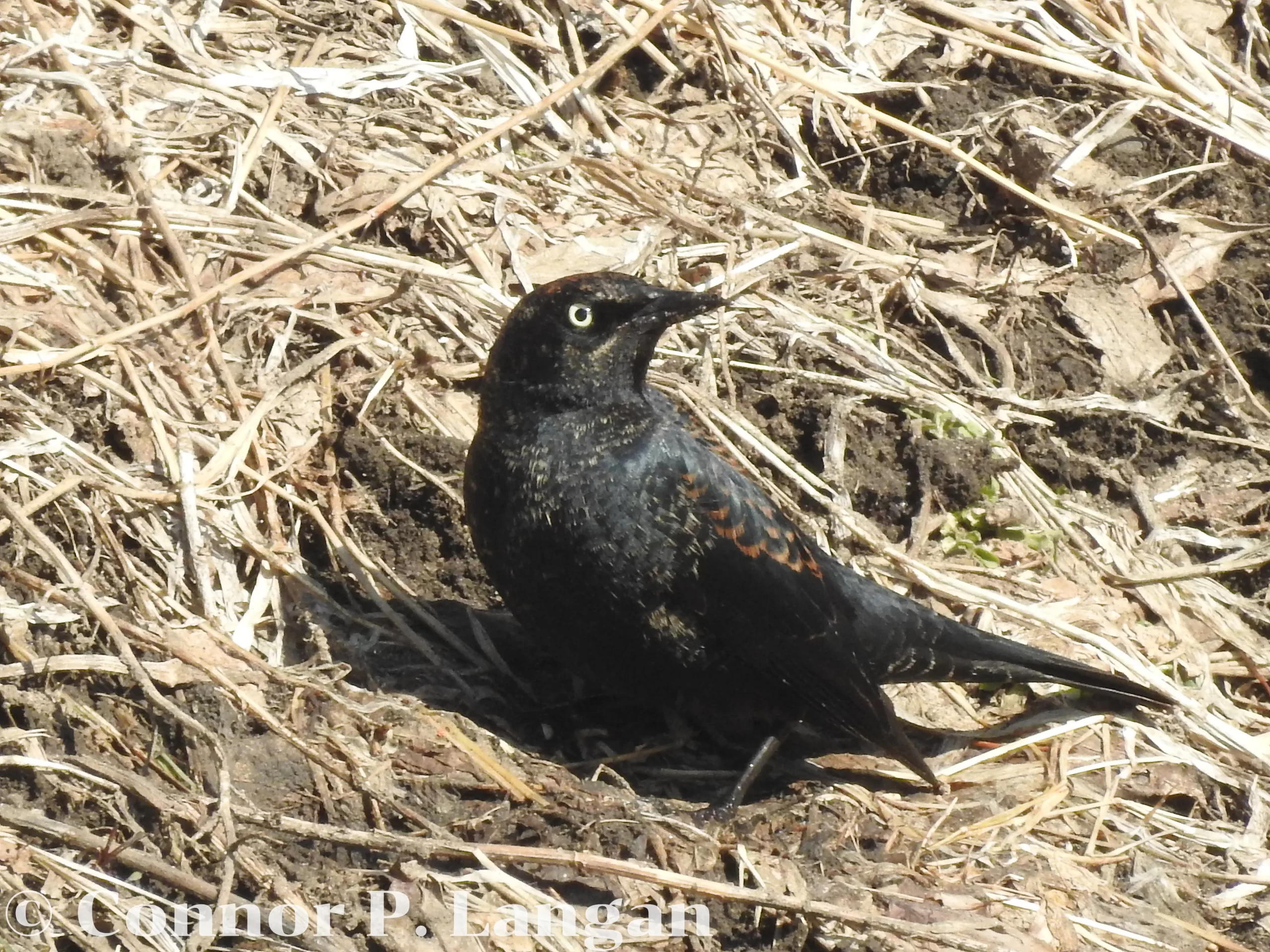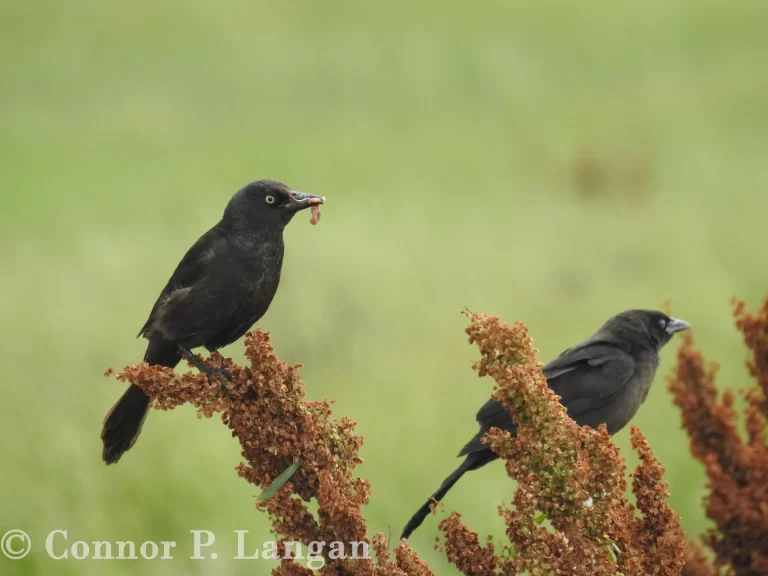Description
Rusty Blackbirds are fairly chunky blackbirds with short tails and medium-length beaks.
These blackbirds measure over 8 inches to just shy of 10 inches long. Rusty Blackbirds weigh 1.75 to nearly 3 ounces.
Males are glossy black overall with pale yellow eyes.
Females have light brown undersides and darker backs. These birds have pale supercilia. Females also have pale, yellowish eyes.
Males develop dark brown undersides, dark backs, and pale supercilia in the nonbreeding season.
Behavior
Rusty Blackbirds gather into flocks during the nonbreeding season. These birds are known to venture into water and move branches as they forage.
Rusty Blackbird Diet
Insects are the primary prey of this species during the breeding season.
These birds transition to a diet that is centered around nuts and fruits in the nonbreeding season.
Habitat
Rusty Blackbirds have a close association with water. These blackbirds breed in saturated areas such as bogs, flooded forests, and riparian corridors.
Watch for Rusty Blackbirds to appear in wooded habitats near water during migration. Swamps and other wet areas are used by these blackbirds during the nonbreeding season.
Range
Most of the Rusty Blackbird’s breeding range is located in the boreal forests of Canada. This species also breeds in Alaska, the Upper Midwest, and the Northeast.
This species winters in the American Southeast and Midwest during the nonbreeding season. Their wintering range does not extend into Mexico.
Breeding
Not much is known about the breeding ecology of these blackbirds. Though some other blackbird species are polygamous, it is thought that Rusty Blackbirds are socially monogamous.
Females likely construct the nest without assistance from a male. Nests are built in woody vegetation close to water.
Females construct cup-shaped nests out of aquatic vegetation or damp terrestrial vegetation. This allows females to mold the vegetation into shape before it dries and solidifies.
Most females likely produce a single brood of eggs each year, though they have the potential to produce additional broods. Rusty Blackbirds have 3 to 6 eggs in each clutch. It probably takes around 2 weeks for the young to hatch, while the young likely leave the nest another couple of weeks after hatching.
Backyard Birding
Rusty Blackbirds may show up at backyard bird feeders during migration. Watch for these birds to be feeding on seeds that have spilled below bird feeders.
Rusty Blackbird Population Status
Populations of this species have crashed in the last half-century. In fact, these birds are in contention for the songbird species that has experienced the worst overall decline in this timeframe.
It is estimated that these birds have declined by at least 75% in the past half-century, though the total decline could be over 90%. There are still over 6 million total Rusty Blackbirds, but this species could certainly be in danger if current trends continue.
The exact reason for the decline of this species is not understood.


